
four ways to unstrip a screw by Audrey C. '24
tΞp work week tales
It’s work week at tΞp!01 pronounced 'Xi' like the Greek letter, tΞp is the co-ed fraternity formerly known as tEp.
While work week in Greek life systems outside the MIT bubble might refer to something else,02 what sounds like an incredibly draining week of 'working' on a manicured persona (i.e. learn sorority chants/dances, gossip and slander your peers) in hopes of securing a bid (an invitation to join a sorority/fraternity) work week at tΞp is what it sounds like: a week dedicated to working on the house. tΞp resides in a beautiful hundred year old brownstone that overlooks the Charles River on the north and the glittery high rises of Back Bay Boston on the south. We have an industrial kitchen with the most powerful burners I’ve used in my life (finally something hot enough for proper wok cooking), five flights of spiraling staircases adorned with intricately carved wooden railings, eclectic murals and sculptures in every nook and cranny, and of course, friendship and love and community.
But!!
The beautiful hundred year old brownstone needs to be maintained! The industrial burners need to be degunked! Nooks and crannies accumulate dust and dead bugs and who knows what brown mystery substances! Friendship and love and community thrive more in spaces that aren’t active heath hazards!03 as a former resident of Tetazoo, where dirt and grime were constant companions, I would like to propose a distinction between wholesome grungy communal living and active health hazards On-campus dorms may have facilities workers to tidy up after filthy undergrads, but at FSILGs04 fraternities, sororities, and independent living groups , that job falls solely on residents. While there is great value in giving twenty-something-year-olds the right to self governance and full ownership over their living space, it’s no surprise that frats have a bad rep for being gross.
That’s where tΞp work week (and also weekly house chores throughout the school year) comes in! Each resident takes on various housekeeping tasks that range from deep cleaning communal spaces to home repairs to purging ancient but useless relics lying around the house. Anything to keep the beautiful hundred year old brownstone beautiful for another century! Or at least for the next year.
I think a mouse died in my walls the other week. Another resident spotted a mouse scurrying across the kitchen. Our hole-y basement is probably the reason why tΞp has been looking real nice for mice lately, so one of my work week tasks has been to patch up holes in the basement. Armed with DIY youtube, spackling, mesh, and three different kinds of caulk, I fill in a couple of suspiciously mouse sized holes with the same finesse as Tiktok landlords.
“Looking for holes has made me notice, well, that it’s kind of a wonder that this house is still upright.”
“That’s what happens when you get crusty engineering students MacGyvering home repairs for over fifty years!”
“I guess if it works, it works. Though they probably said ‘if it works, it works’ every year for the past fifty years and that’s why we’re stuck with the house in this state.”
One prominent hole that can’t be covered with a pile of spackling is the hole between the bottom of the basement door and the ground. There used to be an intact door sweep covering that hole, but the door sweep rubber has since degraded and the not-so-intact sweep needs to be replaced. This is done by taking out the screws holding the sweep to the door:
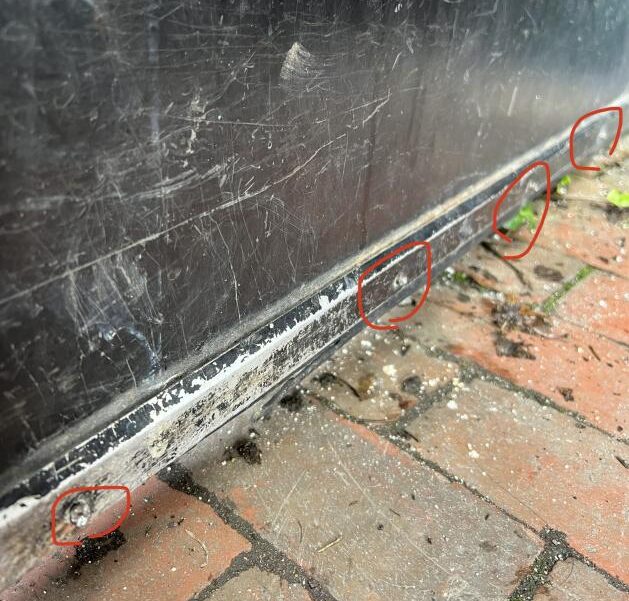
screws circled in red
This could’ve been a quick fix especially with one of tΞp’s power drills, but alas! Screws sometimes do an annoying thing called stripping, which is when the screw head gets so worn down that you can’t remove it using a screwdriver anymore. This occurs when the tip of a screwdriver slips on the screw head instead of actually rotating the screw. Sometimes you’re not using the right kind of screwdriver. I think in my case, the screws are so rusted into the door that the force it takes to break the rust binding exceeds the force a screwdriver bit can apply to the screwdriver head before slipping.
You can see below that if you strip a Phillips head screw (the ones with cross shaped slots) enough, the cross shaped slot becomes a circle. Phillips heads screws are especially notorious for stripping because the cross shape creates multiple separate points of contact, all of which must be interfaced upon snugly to prevent stripping. It’s also much easier to strip a screw with a power drill than a manual screwdriver, since power drills rotate quickly and strip the screw before you notice that happening.
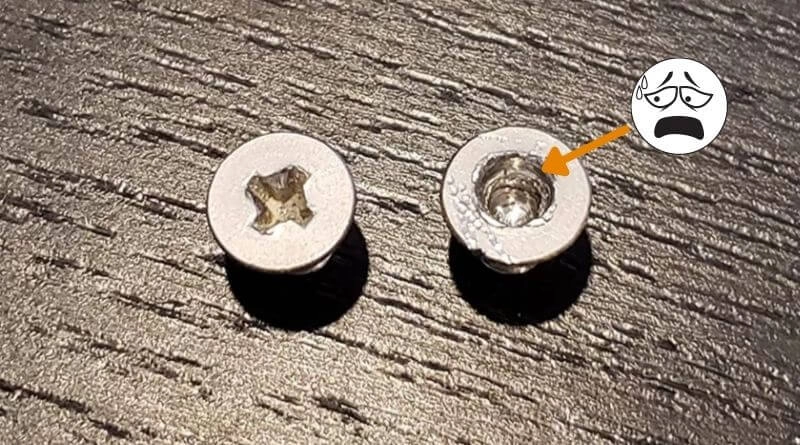 left: lightly stripped screw. right: badly stripped screw. photo courtesy of Toolever
left: lightly stripped screw. right: badly stripped screw. photo courtesy of Toolever
Of course the five screws on the sweep have to be old rusty Phillips head screws. Two hours later, I end up using four different methods and all sorts of tools to extract the five screws.

mildly aesthetic spread on the tΞp work bench
Method 1: Be lucky
Time taken: 10 seconds
Power drills usually have multiple speed/torque settings, where speed and torque are inversely proportional to each other because that’s how motors work! I fiddle around with the settings until I find one that successfully extracts screw #1.
Method 2: Dremel a flathead slot
Time taken: 40 minutes with a phone break
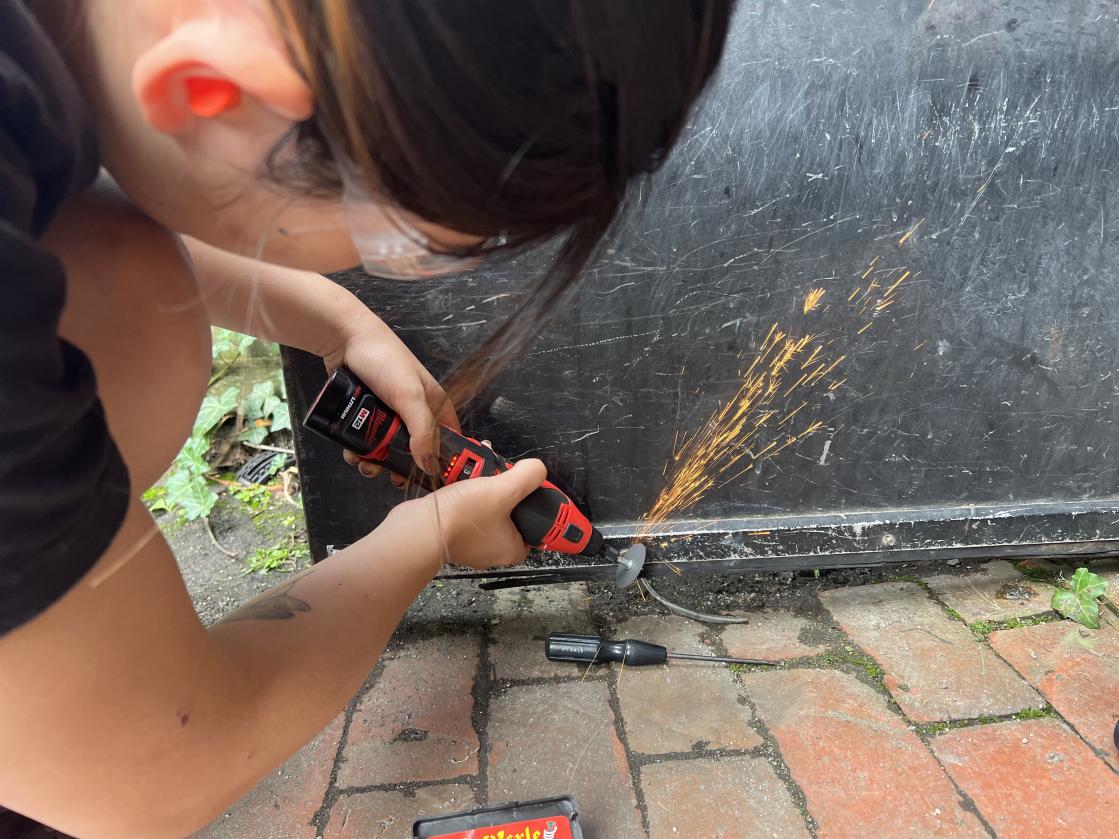
can’t forget the PPE (personal protective equipment)!!
Unfortunately screw #2 (and all the ones that come after it) is a lot more rusted than screw #1. I badly strip screw #2 as I try to extract it with the power drill. Apparently one way to get out a stripped screw is to dremel a deeper slot (essentially a flathead slot) across the screwhead, and then use a flathead screwdriver to get the screw out. The rationale is that flathead screws strip less easily than Phillips head screws.
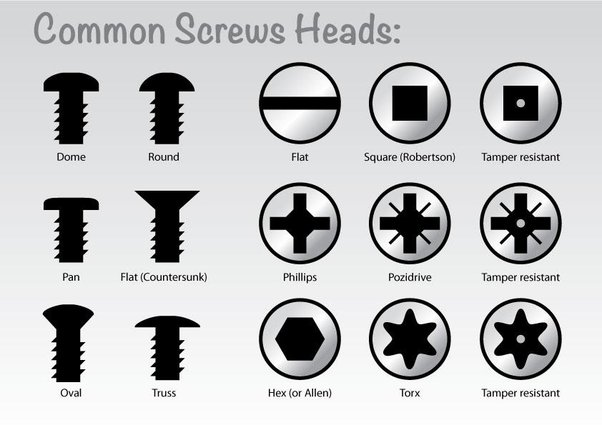
My DIY flathead screw gives just enough leverage to dislodge it from the door. This method isn’t foolproof though. The dremel blade cuts a V-shaped slot into the screw head, which doesn’t interface with a flathead screwdriver as nicely as a U-shaped slot would, which makes the DIY flathead screw prone to stripping.
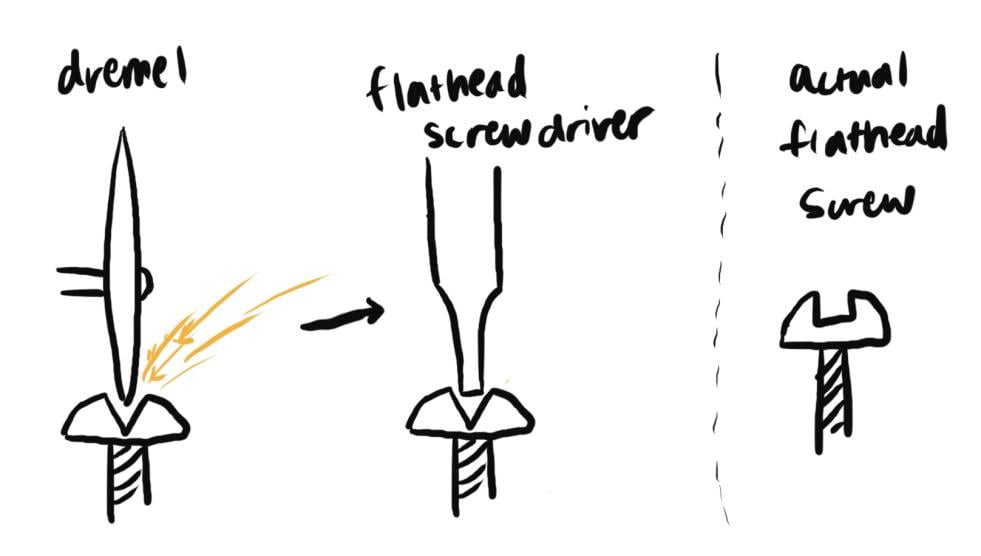
So I just dremel an even deeper slot, unscrew the screw a bit more until it strips, and repeat. Once I can’t get the slot any deeper, I dremel a flathead slot in along the other axis of the cross created by the Phillips head. And once I’ve worn down the second slot as well, the screw has been extracted enough such that I can use a pair of pliers to get it out all the way.
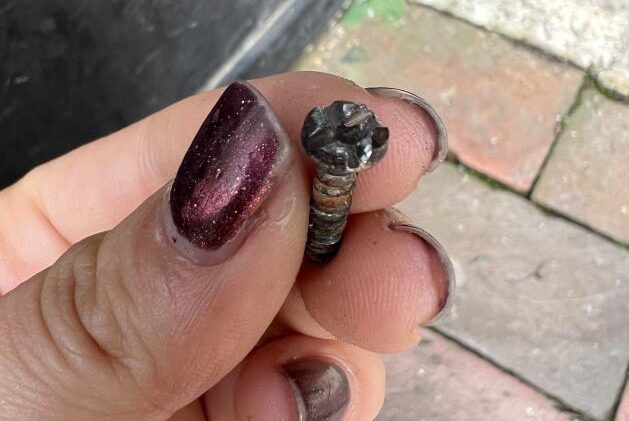
the aftermath. nail polish is illusionist from mooncat
Method 3: Hammer a flathead slot
Time taken: 15 minutes
The dremel is quite loud (hence the ear protection), prompting a fellow tΞp to lean out of the second story window to see what’s going on. Apparently she was tasked with replacing the weatherstripping on the sides of the same door during last year’s work week, which also involved extracting a ton of rusted Phillip head screws. She recommends hammering a manual flathead screwdriver into the screw to increase contact between the screwdriver and screw. Then use the power of your bulging arm muscles to unscrew the screw.

It actually works!
Method 4: Use a screw extractor bit
Time taken (excluding trying methods 3 and 2 beforehand): 5 minutes
Time taken including: 1 hour
Screw #4 is a real doozy. It’s as if the rust gods blessed screw #4 with ALL THE RUST. My bulging arm muscles are too tired and not bulging enough for method 3 to work, and method 2 is a flop as well. I’m back at the tΞp work bench looking for a bigger flathead screwdriver when I notice a rather inconspicuous black plastic container in a corner.
Apparently we’ve had screw extractor bits specifically for extracting stripped screws this WHOLE TIME?!
They’re quite easy to use: You first insert the screw extractor bit into a power drill with the pointy end sticking out to gouge a large hole into the screw head. Then flip the screw extractor bit to use the ridged cone shaped end (pictured below) to “catch” onto the screw head.
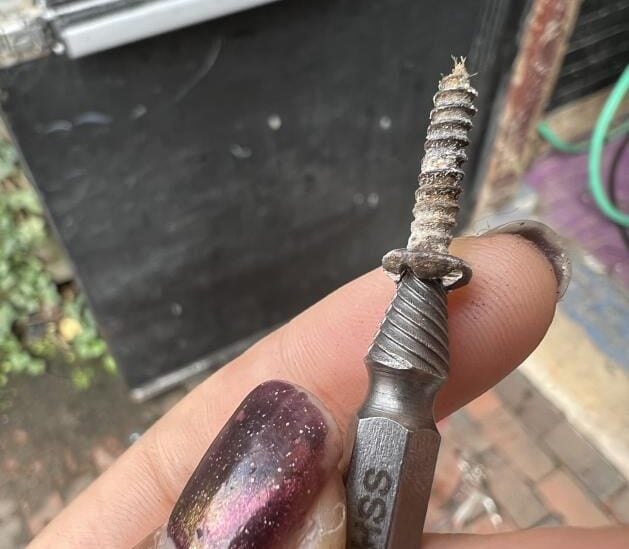
Perhaps it goes without saying, but I also remove screw #5 using this handy dandy bit that I wish I knew existed two hours ago.
Here ya go! Four different ways to remove a stripped screw.
And here’s to a year of living in a beautiful hundred year old brownstone house that also happens to be functional and clean!
- pronounced 'Xi' like the Greek letter, tΞp is the co-ed fraternity formerly known as tEp. back to text ↑
- what sounds like an incredibly draining week of 'working' on a manicured persona (i.e. learn sorority chants/dances, gossip and slander your peers) in hopes of securing a bid (an invitation to join a sorority/fraternity) back to text ↑
- as a former resident of Tetazoo, where dirt and grime were constant companions, I would like to propose a distinction between wholesome grungy communal living and active health hazards back to text ↑
- fraternities, sororities, and independent living groups back to text ↑